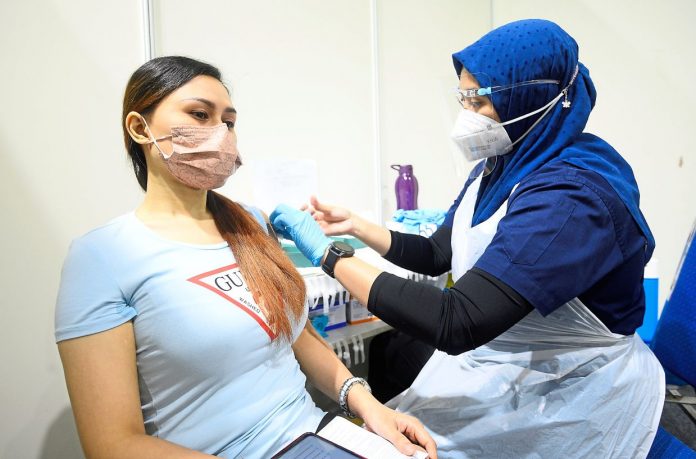Sorting the problem
THERE was a pop to the share price of Top Glove Corp Bhd after news broke that the United States Customs and Border Protection lifted its import ban on rubber gloves made by the company.
after news broke that the United States Customs and Border Protection lifted its import ban on rubber gloves made by the company.
The process to get the ban lifted was arduous and costly, but eventually had to be done in order to rectify not only the image of a top rubber glove company in the country but also that of companies in Malaysia.
Top Glove was not the only company that has been hit by an import ban by the US for what it perceives as labour standards and practices that do not meet its mark.
Top Glove’s share price eventually settled just marginally higher after a big lift at the open. Likely it is the expectation that average selling prices of rubber gloves are on the downward slope that saw investors and traders sell into strength.
But the entire episode is a lesson for corporate Malaysia. With other companies now having issues with the US government over labour practices, the treatment of foreign labour is now a focus of not only governments but also investors.
Having shoddy labour practice is a cost to companies that rely on a large number of migrant workers. The repercussions of not treating foreign labour properly is a huge blow to the company involved but also the reputation of the country.
Companies too have to realise past norms are no longer applicable. It is now between what is right and wrong, and employing foreign labour will come with higher costs. And those costs will not go down.
The issue before many companies is the use of more automation to reduce the dependency on the utilisation of foreign labour to run operations.
That is the way forward as it will not only improve efficiency and productivity, but also reduce risk and overall cost structures in the long run.
Maintaining OPR
AMID easing Covid-19 curbs and the reopening of more economic sectors, Bank Negara has kept the overnight policy rate (OPR) unchanged at 1.75%.
With risks to economic outlook tilted to the downside, analysts expect the central bank to be patient in lifting monetary accommodation. Notably, the central bank has maintained the OPR for the seventh Monetary Policy Committee meeting in a row.
One key reason for keeping the benchmark interest rate unchanged is the fact that there are various fiscal aid packages filtering through into the economy. There have been eight Covid-19 stimulus programmes. Growth momentum is also being driven by the expansionary 2021 Fiscal Budget following the 50% increase in the Development Expenditure allocation.
By not increasing the OPR at a time inflation is already rising, Bank Negara is potentially signalling that it wants to provide cheap monetary “stimulus” in anticipation of soft recovery ahead, say analysts.
A low interest rate environment can help spur business spending on capital goods, which helps the economy’s long-term performance. On the consumer’s end, interest rates have a direct effect on their behaviour, impacting several facets of everyday life from household expenditures on homes or purchase of consumer durables like cars.
Analysts note Malaysia’s engine of growth continues to recover as shown in the steady turnaround in high frequency indicators such as the consumer price index, industrial production index and trade numbers. Externally, major economies such as the US, eurozone and China have reopened their economies, pushing demand for our key export products, especially manufacturing goods.
This is encouraging. But risks to growth remain. This may come from a resurgence in Covid-19 infections, which could lead to pockets of containment measures especially in industrial areas which remain susceptible to outbreaks.
Therefore the current interest rate environment should give businesses and consumers some breathing space as they prepare to bounce back from the pandemic.
Moving forward
NOW that the Klang Valley is in phase two of the National Recovery Plan (NRP), there should be an injection of optimism that the economy too will point towards a recovery that may well see growth tilt towards the higher end of projection.
With the rate of unemployment remaining unchanged at 4.8% in July, which was assisted by a number of states entering phase two of the NRP, there is going to be a palpable buoyancy that a more open Klang Valley will be good for business.
As it stands, the daily infection numbers for Selangor and Kuala Lumpur continue to drop as the pace of vaccinations rise.
The number for Selangor is still on the upper band when compared to what the national numbers are for the other states in the country, but it is a far improvement from the scary numbers it was announcing just weeks ago.
But the path to recovery will hinge of confidence of people to return to their normal lives. There will be apprehension from people to venture forth right after more leeway is granted. One eye will certainly be fixated on the daily Covid-19 numbers but on the other hand, there will be increasingly acceptance and confidence as the days go on that life will have to return to normal.
That normal will mean still adhering to the standard operating procedures but more so, people will move on with their daily activity like what they have done in the past, but within reason.
That will be the flickering embers for the nascent economic recovery most will expect in due time.
























